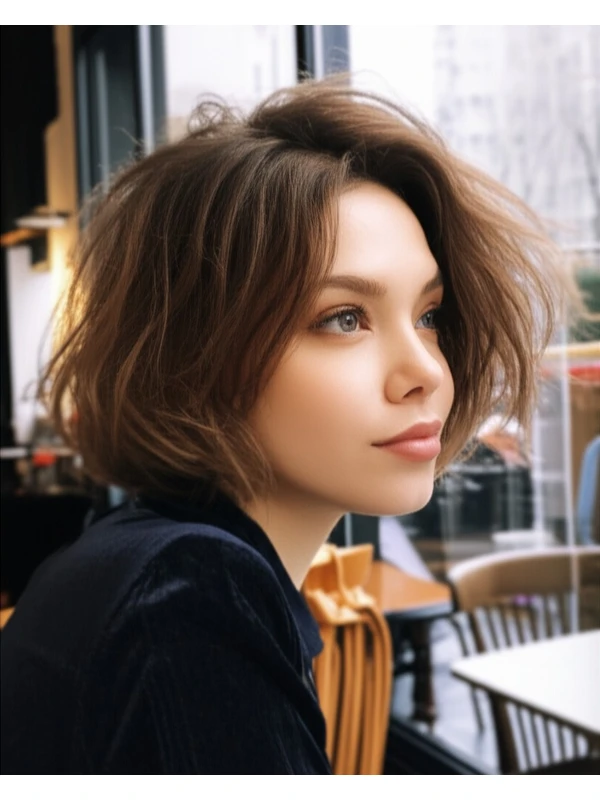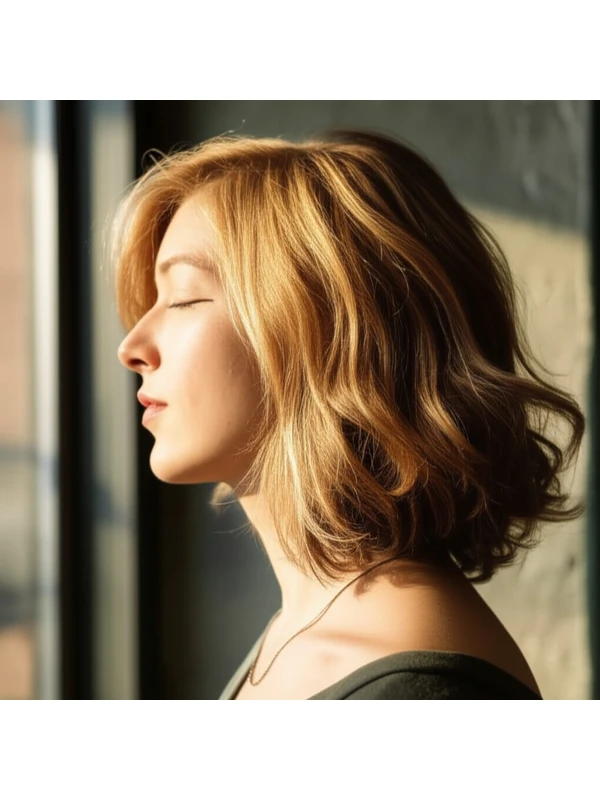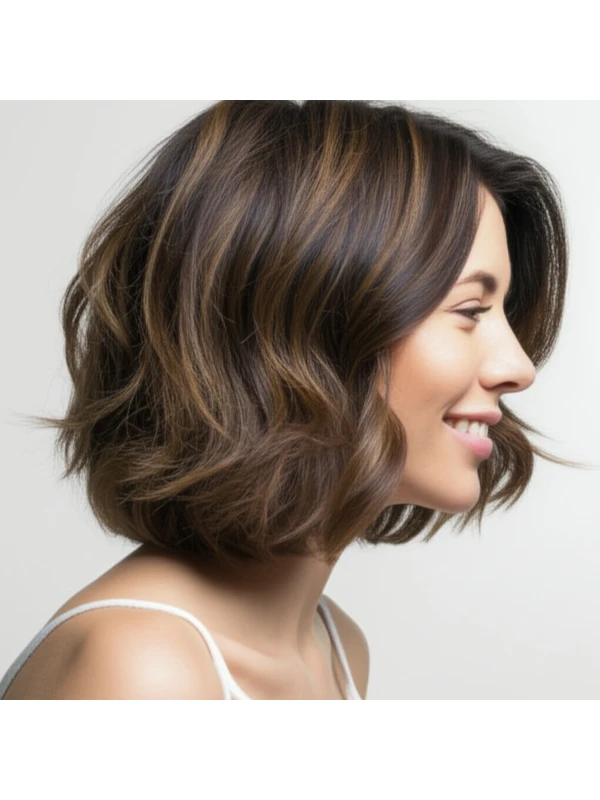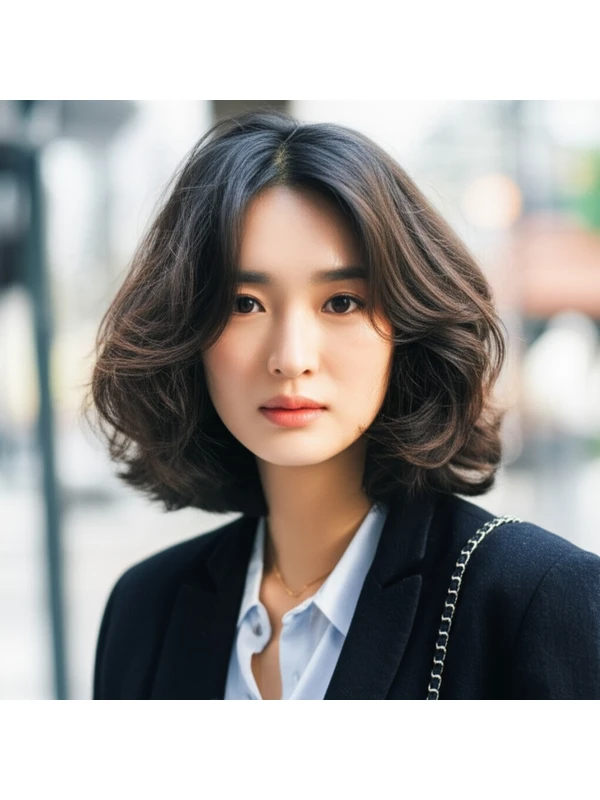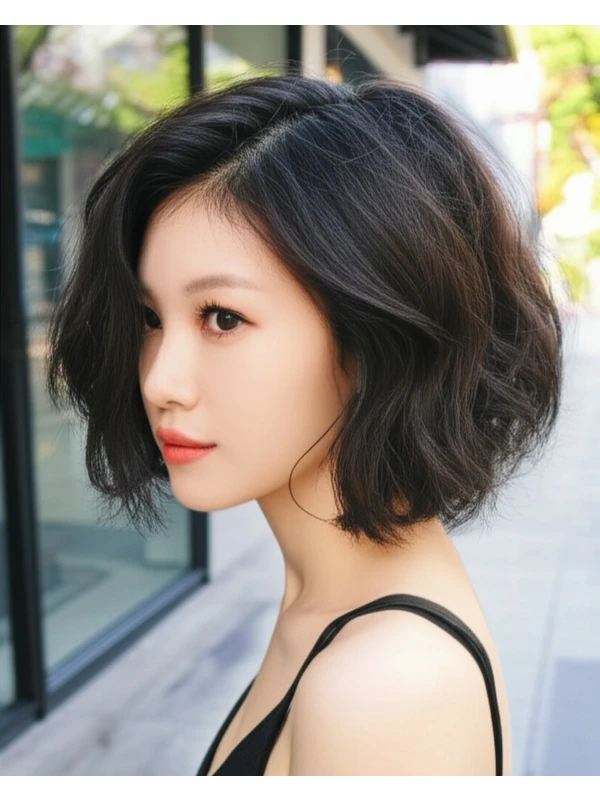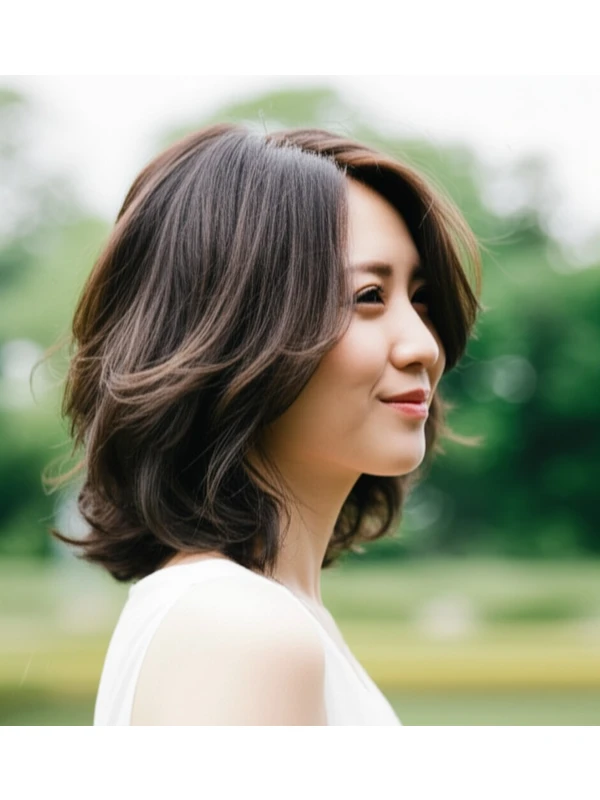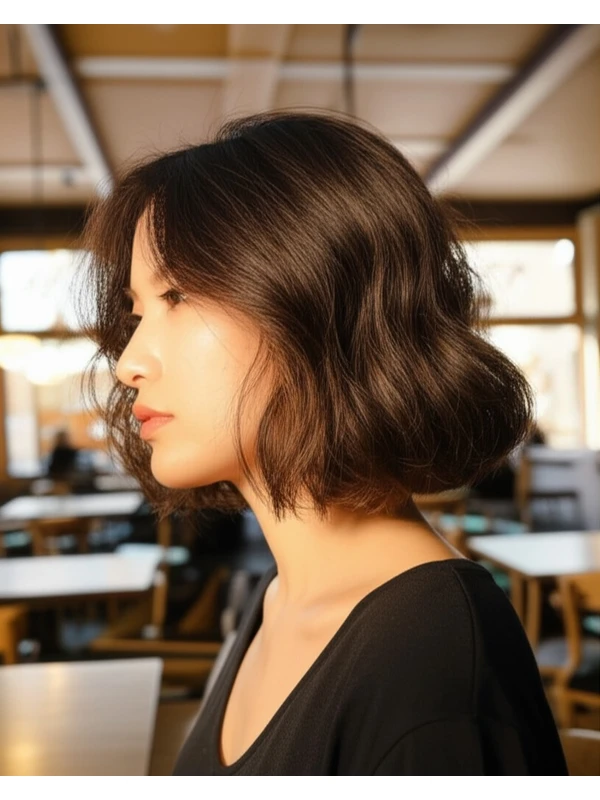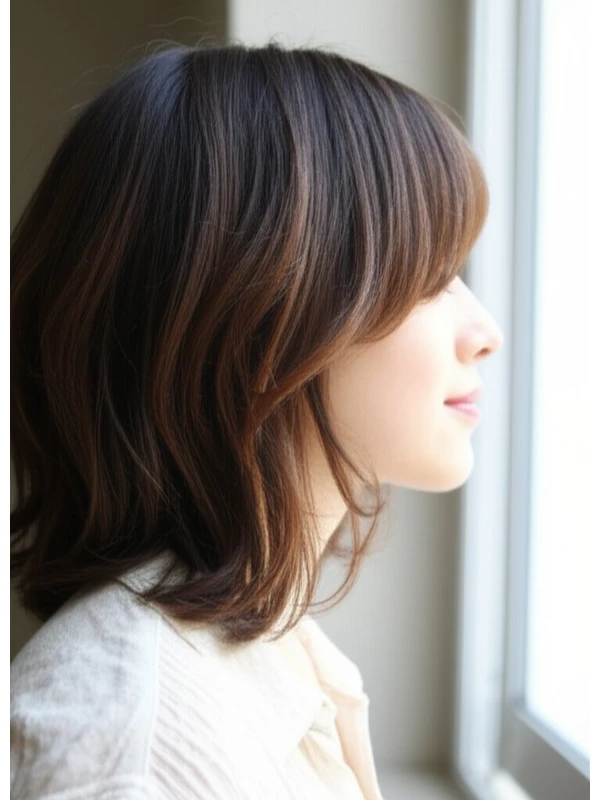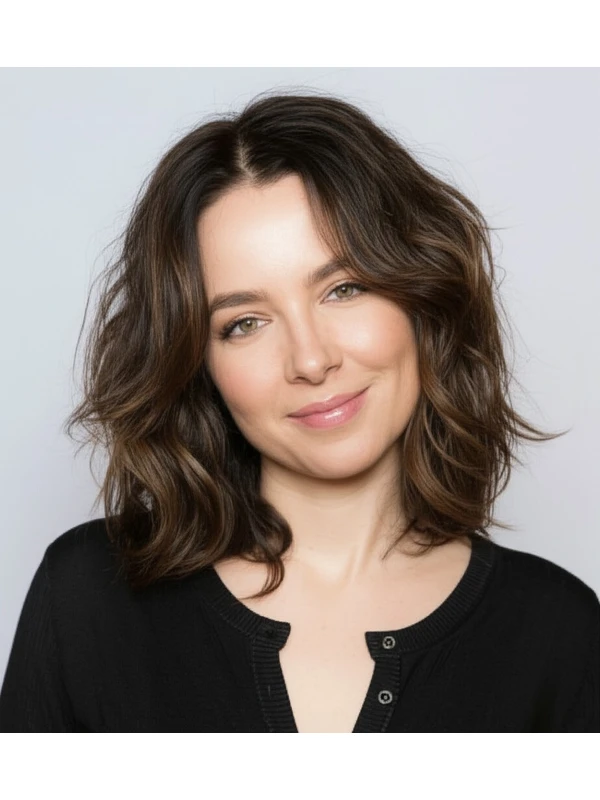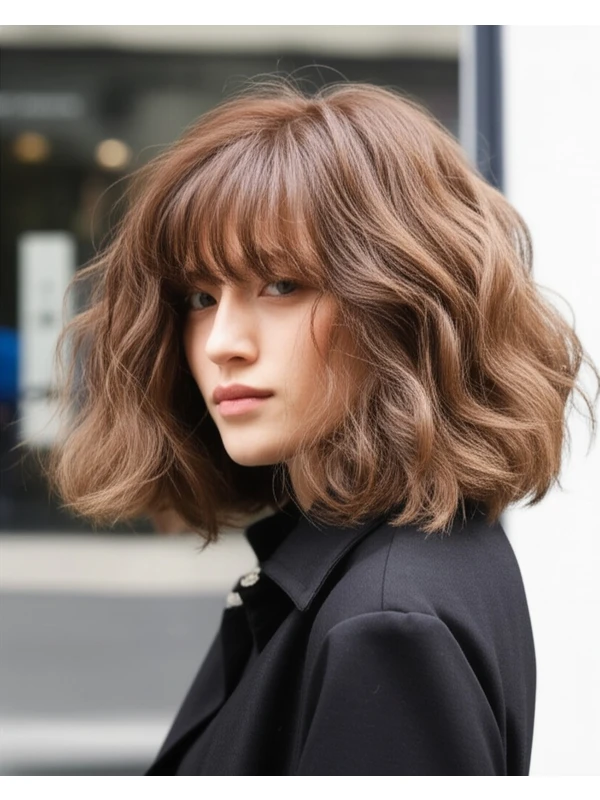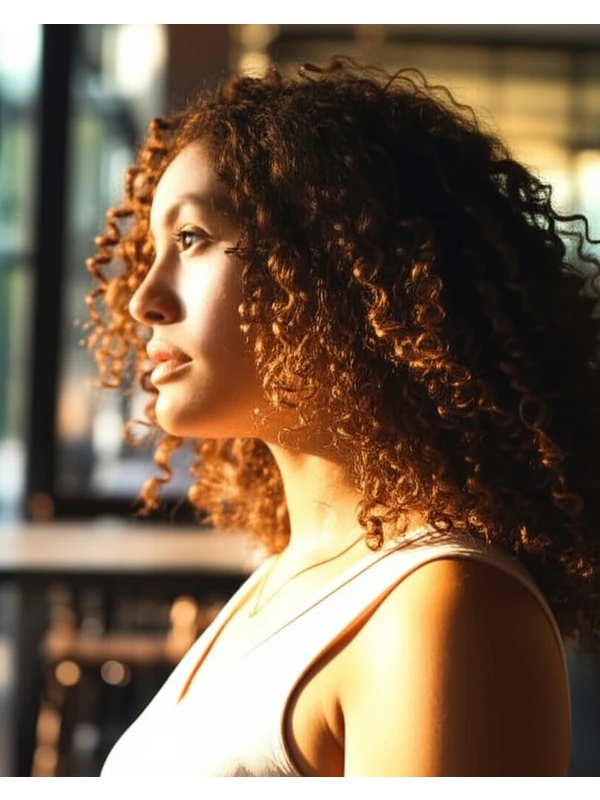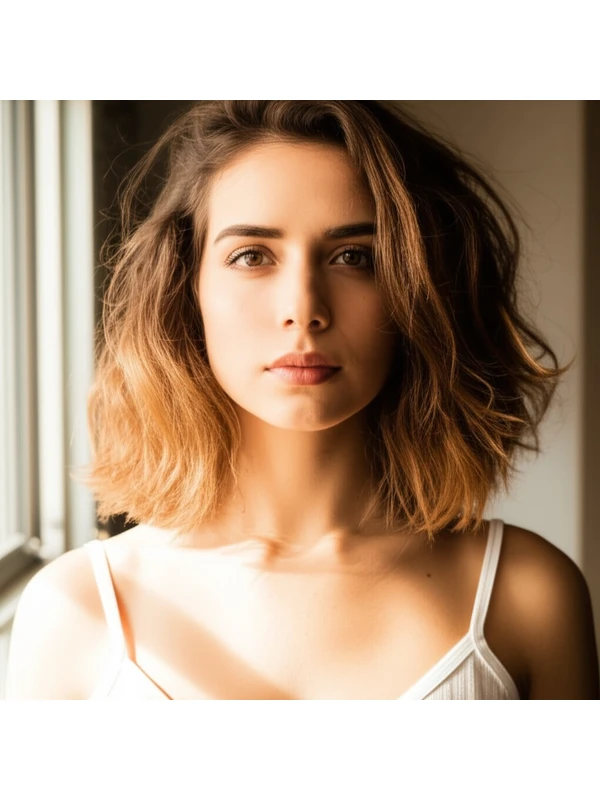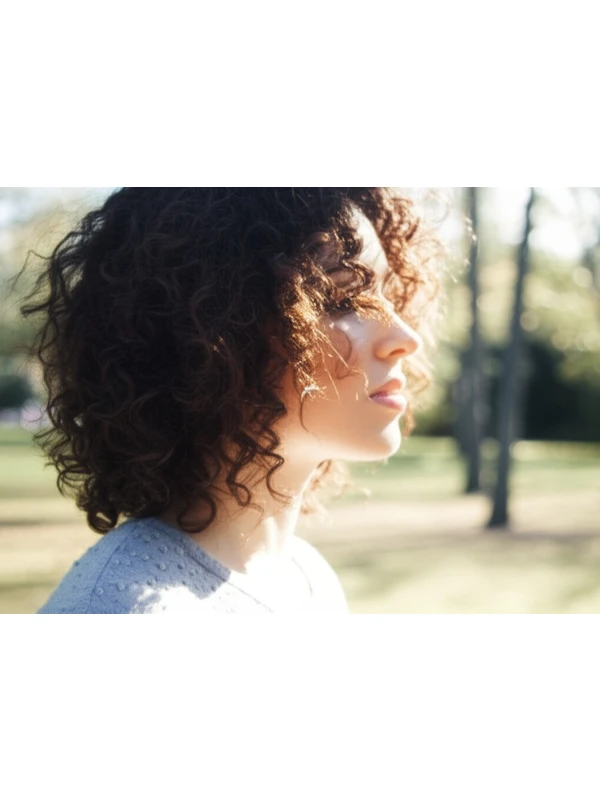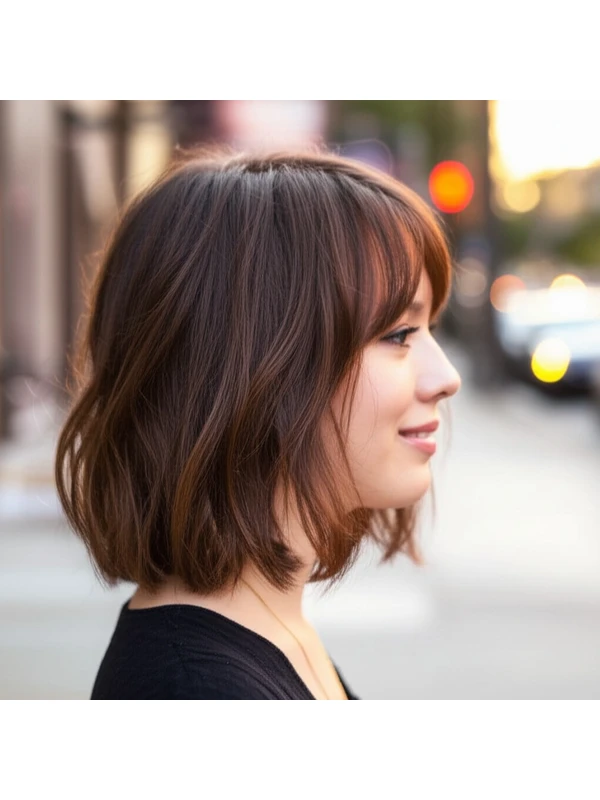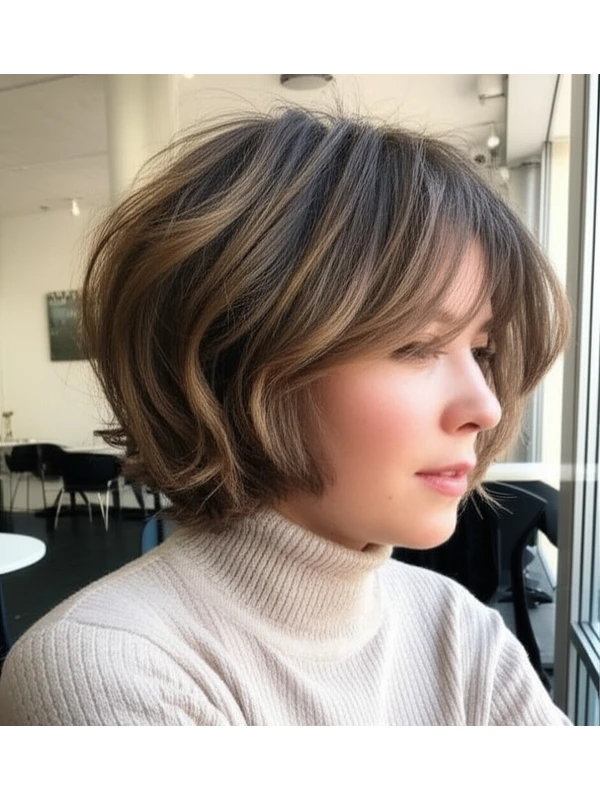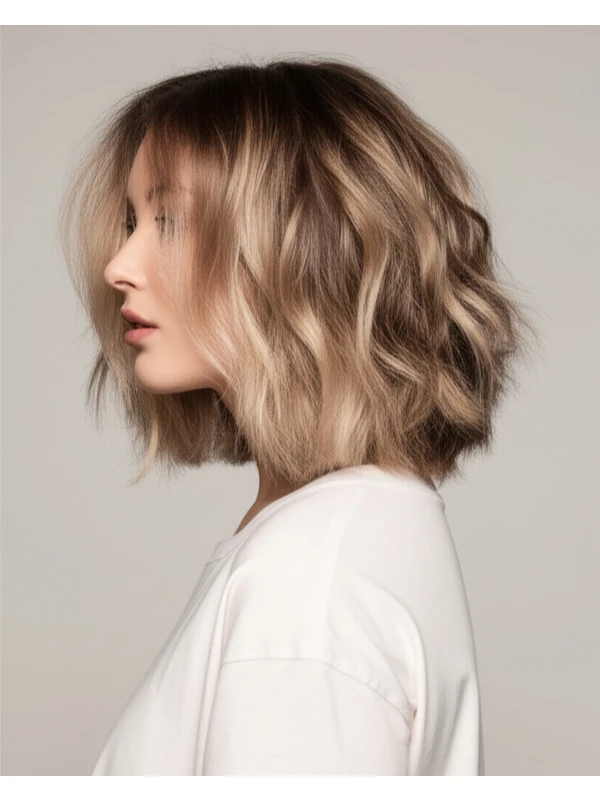#The S-Curve Layers: A Guide to Effortless Shape & Movement
The "S-curve layers" are a universally flattering hairstyle gaining popularity for its soft, face-framing shape and effortless movement. This isn’t just about layers; it's about how those layers fall – creating an “S” shape when viewed from the side, with volume at the crown and softly tapered ends. Let's dive into everything you need to know!
#1) Background & Definition: Understanding the Cut
The S-curve layered cut is built on a foundation of long layers that begin around the cheekbone or chin area (depending on hair length). The key is strategic layering – shorter pieces at the crown create lift and volume, while longer pieces cascade down to soften the edges. This creates a natural wave pattern, even in straight hair, mimicking an "S" shape when viewed from the side.
- Geometry: Think of it as a pyramid turned on its side. The widest part (volume) is at the top, gradually narrowing towards the ends.
- Key Features: Face-framing layers, volume at the crown, soft tapered ends, movement and flow.
- Length Ranges: This style works beautifully from shoulder length to below the shoulders (approximately 10 inches or longer). Shorter versions can still work but require more precise layering.
- Alternative Names: Layered cascade cut, face-framing layers with volume, soft layered bob (if shorter), dimensional layers.
#2) Face Shape Fit: Finding Your Ideal Angle
The S-curve layers are incredibly versatile, but understanding how they interact with your face shape is key to maximizing their impact.
- Oval: This is the most universally flattering face shape! The S-curve layers enhance natural symmetry and highlight cheekbones. A side part adds even more balance. Fringe: A soft, wispy fringe or curtain bangs work beautifully.
- Round: Layers add angles to soften roundness. Volume at the crown helps elongate the face. Avoid too much volume at the cheeks. Fringe: Side-swept bangs are a great option for slimming effect.
- Square: The S-curve softens strong jawlines and angular features. The layers create movement that breaks up harsh lines. Fringe: A soft, textured fringe can soften the forehead.
- Heart: Layers around the face balance a wider forehead and pointed chin. Volume at the crown adds fullness to a narrower lower face. Fringe: Long, side-swept bangs are ideal for balancing proportions.
- Diamond: The S-curve layers highlight cheekbones and soften angular features. A slightly off-center part creates asymmetry that complements diamond shapes. Fringe: A brow-grazing fringe can be very flattering.
- Oblong (Long): Layers add width to a long face, creating the illusion of more balanced proportions. Avoid excessive height at the crown, which will elongate even further. Fringe: A blunt or textured fringe helps shorten the appearance of the face.
#3) Body Proportions & Height Guidance: Tailoring the Silhouette
The S-curve layers can be adjusted to suit different body types and heights.
- Petite: Shorter lengths (shoulder length or slightly above) prevent overwhelming a smaller frame. Focus on volume at the crown, but avoid excessive width at the sides.
- Average Height: Mid-length to longer versions work wonderfully, allowing for more dramatic S-curves.
- Tall: Longer layers that cascade down create balance and elegance. Volume can be distributed throughout the head for a fuller look.
- Narrow Shoulders: Layers around the face add visual width, balancing narrow shoulders.
- Broad Shoulders: Avoid excessive volume at the sides of the head, which will accentuate shoulder width. Focus on height at the crown to draw attention upwards.
- Short Neck: Longer layers that fall below the chin help elongate the neck visually. Avoid blunt cuts or severe bobs.
- Long Neck: Shorter lengths and more volume around the face can add balance and prevent a long-necked appearance.
#4) Works Best With Hair Types & Densities: Finding Your Match
This cut's adaptability is one of its greatest strengths!
- Straight Hair: The S-curve layers create subtle movement and texture, preventing a flat or lifeless look. Styling with a texturizing product enhances the shape.
- Wavy Hair: Layers enhance natural waves, creating more defined curls and bounce.
- Curly/Coily Hair: This style works beautifully to define curl patterns and reduce bulk. Shrinkage is key! Account for 50-75% shrinkage with coily hair when determining length. Shorter layers can create a halo effect, while longer layers maintain length and flow.
- Fine Hair: Layers add volume and the illusion of thickness. Avoid too many short layers which can make fine hair look even thinner.
- Medium Hair: The S-curve layers work perfectly to enhance natural texture and movement.
- Thick Hair: Strategic layering removes weight, creating a lighter and more manageable style.
#5) Styling Variations: From Casual to Evening Glam
The beauty of this cut lies in its versatility!
- Sleek vs. Textured: For a sleek look, use smoothing serums and blow-dry with a round brush. For texture, air dry or diffuse with a diffuser.
- Middle vs. Side Part: A side part adds asymmetry and face-framing interest. A center part can create more balance for oval faces.
- Fringe Variations: Wispy bangs, curtain bangs, blunt fringes – all work depending on your face shape and desired look.
- Occasion Styling: For casual days, air dry with a leave-in conditioner. For the office, blow-dry smooth or create soft waves. For evening events, add curls with a curling iron or hot rollers for extra glamour.
#6) Maintenance: Keeping Your Shape Sharp
- Trim Cadence: Every 8-12 weeks to maintain shape and prevent split ends.
- At-Home Routine: Regular deep conditioning treatments are essential, especially for dry or damaged hair.
- Heat vs. Air Dry: Minimize heat styling whenever possible. When using heat, always use a protectant spray.
- Product Checklist:
- Shampoo & Conditioner (suited to your hair type)
- Leave-in Conditioner (for moisture and detangling)
- Texturizing Spray or Mousse (for volume and definition – especially for straight hair)
- Smoothing Serum (for sleekness - optional)
- Finishing Hairspray (light hold)
- Estimated Daily Styling Time: 15-30 minutes, depending on desired style.
#7) Grow-Out Roadmap: The Evolution of Your Style
- Months 1-3: The initial shape is most defined. Regular trims are crucial to maintain the S-curve and prevent a boxy look.
- Months 4-6: Layers start to blend together slightly, creating a softer overall appearance. Volume at the crown may decrease slightly as hair grows longer.
- Maintenance: Focus on maintaining length and shape with regular trims. Consider adding subtle face-framing layers if needed.
#8) Color Pairings: Enhancing Dimension & Depth
- Cool Undertones (ash blonde, cool brown): Silver or icy tones enhance the S-curve’s movement and create a modern look.
- Warm Undertones (golden blonde, warm brown): Rich caramel highlights or copper accents add warmth and dimension.
- Low-Commitment Options: Balayage or babylights can add subtle dimension without harsh root lines. Root shadowing is another option to soften the regrowth line.
#9) Season & Occasion Guide: Adapting Your Look
- Spring/Summer: Lighter, brighter colors and beachy waves enhance a carefree vibe.
- Fall/Winter: Richer tones (chocolate browns, deep reds) add warmth and depth. Sleeker styles are perfect for professional settings.
- Work: Soft waves or a smooth blow-dry create a polished look.
- Weddings: Romantic curls or updos showcase the layers beautifully.
- Parties: Embrace texture and volume with playful styling techniques.
#10) Cost & Time: What to Expect at the Salon
- Salon Time: Typically 1.5 - 2.5 hours, depending on hair length and complexity of layering.
- Estimated Price Range: Moderate to High (relative terms – varies significantly by location and stylist experience).
#11) Pros & Cons: Weighing Your Options
Pros: Universally flattering, versatile styling options, adds volume and movement, enhances natural texture. Cons: Requires regular trims to maintain shape, can be time-consuming to style (depending on desired look), may not work well with very short hair lengths without adjustments.
#12) Salon Consultation Script: Questions to Ask & Discuss
Here are some prompts you can use when talking to your stylist:
- "I love the S-curve layered look! Can you assess my face shape and determine if it’s a good fit?"
- “What length would be most flattering for my face shape and body type?”
- “How can we incorporate layers to address [specific concern, e.g., add volume at the crown, soften jawline]?”
- "Can you show me examples of S-curve layered styles on people with similar hair types/textures as mine?"
- "What styling techniques would you recommend for maintaining this look at home?"
- “How often will I need to come in for trims to keep the shape?”
FAQs:
- Will this style work if my hair is very thin? Yes, but we'll focus on strategic layering and volume-boosting products. Avoid too many short layers.
- Can I achieve this look with just air drying? Absolutely! It’s designed to have natural movement. A leave-in conditioner will enhance the waves.
- How do I prevent my hair from looking "choppy" after layering? The key is a skilled stylist who understands how to blend layers seamlessly.
- Is this style difficult to manage? It's relatively low-maintenance, but regular trims are essential.
- Can I wear bangs with this cut? Yes! Curtain bangs, side-swept bangs, or even blunt fringes can all work beautifully depending on your face shape and preference.
- What if my hair is naturally very straight? We'll use texturizing products and techniques to create the S-curve effect. A slight bend with a round brush during blow drying will help too!
- How does this style look in photos? It photographs incredibly well, showcasing movement and dimension – perfect for social media!
- Can I color my hair myself after getting this cut? While possible, consulting your stylist about color placement is recommended to maximize the impact of the layers.
